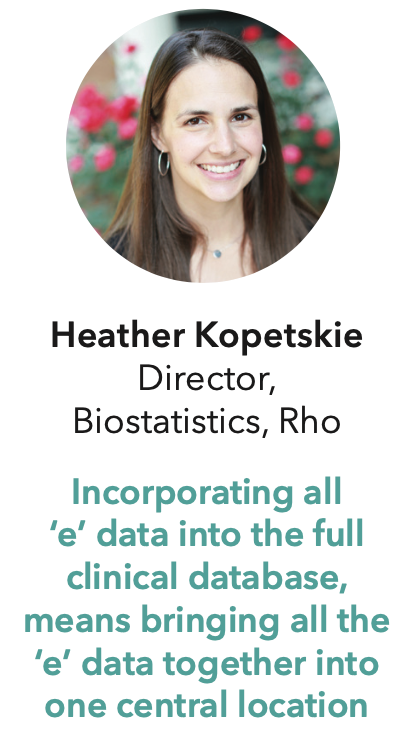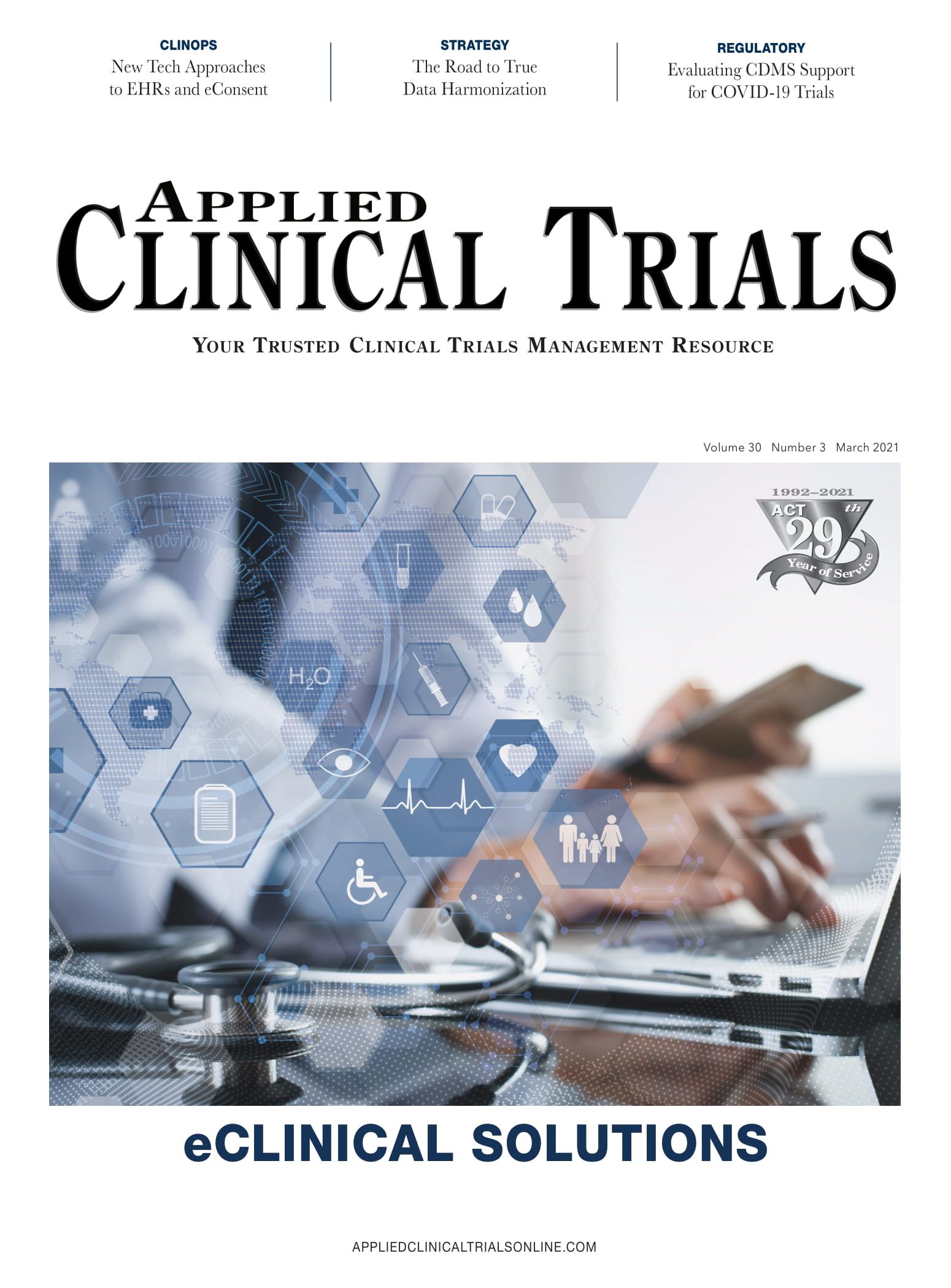Plan the Flow of Data Early for Maximum Effect
In this interview, Heather Kopetskie, Director of Biostatistics for Rho, discusses some points related to proactively managing the many “e”s in data collection.

A wealth of information is available regarding decentralized clinical trials and the technology solutions available for implementation of eConsent, eCOA, and everything “e.” These technologies are essential and allow clinical trials to be patient centric, as well as provide easier access for patient participation.
However, what is less often discussed is how the ‘e’ data is incorporated into the full clinical database and how we ensure that the data is meeting regulatory expectations and trial integrity requirements for FDA approval. In this interview, Heather Kopetskie, Director of Biostatistics for Rho, discusses some points related to proactively managing the many “e”s in data collection.
How is ‘e’ data incorporated into the full clinical database? Is this an easy or complex process given the various data sources?
Heather Kopetskie: Incorporating all ‘e’ data into the full clinical database, means bringing all the ‘e’ data together into one central location. Preferably, early on in the trial and often. The complexity of this process is highly dependent on the process of receiving data from the various data sources. If it is data that can be downloaded on-demand from a cloud-based server, then they will be easy to obtain. If the data aren’t available in a central location and need to be accessed from each subject individually via a central site, then it can be more complex to obtain the data quickly and often.
Who is involved in mapping out a data flow process? How often do you find this map changes?
Kopetskie: The clinical data manager, programmer, and representatives from any third-party vendors are essential in this mapping. However, project managers, the clinical operations lead, and sponsor representatives are also critical depending on who holds the contract with the vendors and depending on how the flow of data works. Similar to above, if data can be accessed via a cloud, the clinical data manager and third-party vendor can determine most of the process. If the sites are involved the project manager or clinical operations lead are important in those conversations.
With data collected directly from the patient, “source data verification has been removed.” Why is this and how do we ensure confidence in this data and what quality and statistical controls should be put into place to ensure data integrity?
Kopetskie: What is meant by ‘when data are collected directly from the patient, source data verification has been removed’ is there is no paper source for a clinical monitor to verify against since the patient directly entered information into an application. In this situation, central monitoring is essential to ensure that following accuracy of the data. A few things that can be checked are that the data are being collected at the appropriate time and are not missing; participants are appropriately understanding scoring (e.g. on a 0-5 scale); variability in the data is appropriate (i.e. lack of variability is concerning); and reviewing distributions of the data and trends over time.
